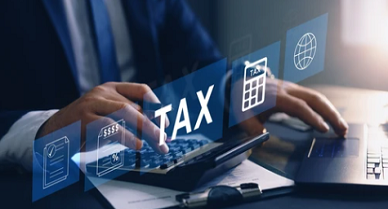Case Analysis of NATCO v. Bayer
Compulsory licensing is a highly debated question of the hour in the context of the pandemic. The tussle between supporting the creator’s innovation and the social welfare still prevails. The present case deals with the compulsory license awarded to a domestic generic pharmaceutical private company, Natco, for the manufacture and sale of the kidney cancer drug Nexavar, patented by Bayer Corporation in India. This is a significant decision in Indian history because India is one of the few countries where giving Compulsory Licenses for local manufacture is meaningful as the Industry has the potential to manufacture the medicines that are patented and provide life-saving drugs at an affordable rate to patients.
[Picture Credit: istockphoto]
ANALYSIS
The case is analyzed in the context of Section 84 of the Patents Act, 1970 (amended) which provides for the issue of a compulsory licenses in India. Section 84(1) states that anyone interested in obtaining a compulsory License after three years from the date of the patent’s grant, may do so by applying to the CoPs. There are various conditions under which such a compulsory license can be sought and the case deals with whether these conditions are satisfied
- Reasonable requirements of the public have not been met;
- The patented invention is not readily available to the general public at a reasonable price, or;
- The patented innovation is not being developed in India.
- Reasonable requirements of the public have not been met
In regards to this issue, the IPAB took into consideration the accessibility of the drug to the public. It was found that, only 2% of people with these specific cancers would be able to get Nexavar, hence the public’s realistic expectations were not met. The high cost of the drug also made the product unaffordable to many other patients in the three years they were granted a patent. The Controller evaluated the GLOBOCAN statistics and Form-27 that was filed by the Patentee to determine the quantity of the drug that needs to be made available to the public and held that the accessibility requirement of the statute was not achieved by the Patentee.
Both compulsory license applicants and patent seekers should be concerned about the court’s decision, as it raises significant factors about what constitutes “reasonable requirements.” However, such a position is ambiguous, leading to subjective approaches. We believe an applicant should focus on the patent’s public impact. A vast number of patients should be able to acquire life-saving drugs, given the court’s emphasis on public perspectives. This notion is also evident from cases like Novartis AG v. Union of India, a significant precedent that focused on the importance of public health and equitable access to medicines. Although this ruling may encourage global pharmaceutical corporations to pursue differential pricing as suggested in this case, the legal reasoning behind this approach is uncertain. Similarly a more recent case of Lee Pharma v. AstraZeneca case, the applicant on their inability to prove reasonable requirements was denied compulsory licensing thereby highlighting the significance of this condition.
- The patented invention is not readily available to the general public at a reasonable price
“Reasonable price” has not been defined by any legislation. Therefore, it is the usual practice to compare the cost of consumption of the drug to income levels of the patients who are dependent on it, however, such a calculation is often insufficient because patients with complex diseases are often prescribed more than one prescription and these medicines are not the sole source of the patient’s expenses. Natco argued that the lowest-paid government employee would have to work for three and a half years to earn INR 2,80,000 per month in order to afford a monthly dose of Nexavar (a USD 5700).
Bayer contended that “reasonable price” should necessarily be looked at from the public’s perspective as well as the Patentee and that such a requirement was also met by CIPLA, who was producing a generic version of the drug when Bayer themselves filed a patent infringement against the company.However, the CoP held that the term has to be comprehended with regard to the need of the public and concluded that such a high price quoted by Bayer was not affordable to patients across the country. In Cipla Ltd. F Hoffmann- La Roche Ltd. & Anr. the court prioritized public benefit when there arose a question of infringement of the patent in question.
When it comes to short-term public benefits, it is that the court’s ruling will help increase the availability and affordability of cheaper, locally produced generic medications. As a result, smaller pharmaceutical businesses can launch generic drugs. These outcomes, however, may change in the future.
- The patented innovation is not being developed in India
With respect to the third ground, the CoP drew a correlation between S.84(1) (c) and S.83(b) of the amended Patent Act, 1970. The concept of ‘working’ of inventions patented in India is discussed under S.83. S.83(b) says that patents are not awarded merely to provide monopolies on importation of patented goods. Nexavar is imported and marketed in India. Bayer argued that the term ‘working’ encompasses commercial work and not that the patented product must be made in India. Thereby, the CoP disregarded this contention and decided that the intention behind the legislation require that the patented innovation be manufactured in India and that Bayer had failed to meet this condition. A reference to Telemecanique & Controls (I) Limited v. Schneider Electric Industries was also made in the present case to understand the issue of ‘working’. Here, the court took into cognizance the submission of the Appellant’s submissions based on section 83 read with section 90(d) of the Patents Act, highlighting the need for the patent to be manufactured in India and not merely imported.
However, there is also ambiguity with regard to this issue. This ruling will place the burden of proof on the Patentee to prove that it cannot meet S. 84(1) by only locally producing, therefore generating ambiguity to the extent to which the court will evaluate such evidence.
CONCLUSION
The ongoing pandemic make governments rethink their stance on accessibility and distribution of medicines. Since COVID-19 pandemic is a national emergency, the government has the authority to impose compulsory licensing for COVID related medical products. As a signatory to joint proposals with other nations, India has also endorsed the idea of compulsory licensing for the same. In spite of criticism on numerous grounds, such as saturation of patent applications and the extent of foreign direct investment (FDI), the ruling tends to favour the public interest and does not eliminate inventors’ rights. Compulsory licensing is an effective public health tool for dealing with public health crisis and scenarios involving high pricing or limited supplies. This balance between innovators and the public must be maintained by government.
Author: Liyana Shaji (intern) – a student of Symbiosis Law School, Pune, in case of any queries please write back us via email at support@ipandlegalfilings.com or contact us at IP And Legal Filings.




